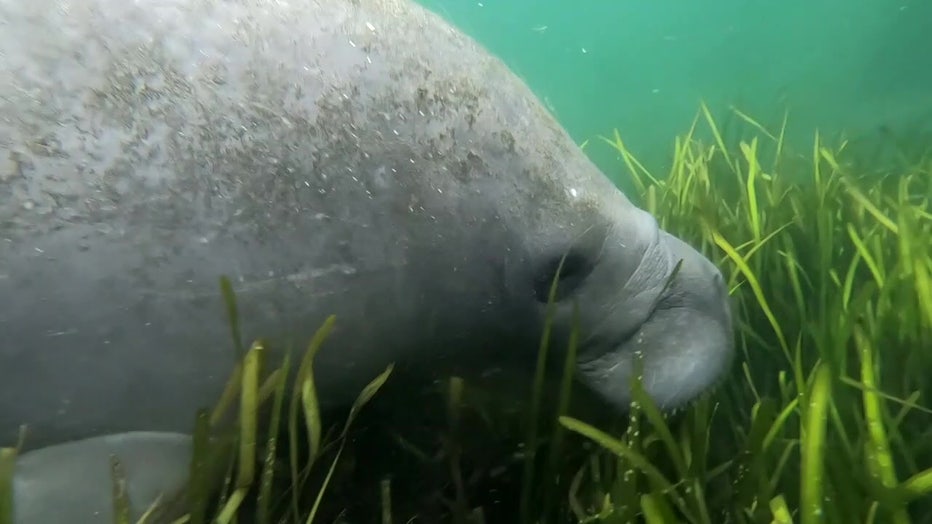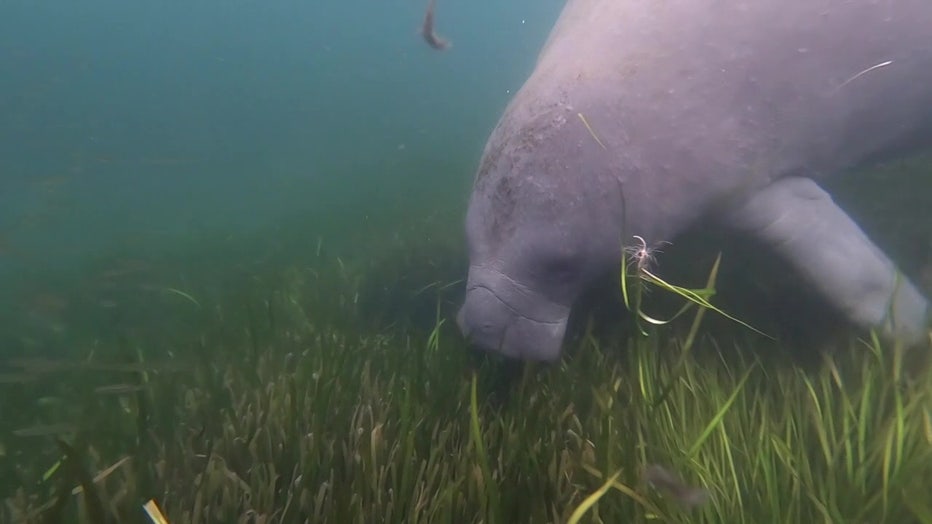Manatee deaths have conservationists considering putting them back on endangered species list
TAMPA, Fla. - The Manatee Viewing Center is back open as the sea cows search for warmer water during colder months.
"Manatees need to seek out warm water during the cold weather or they can become very ill. They can get cold stressed in 68 degrees or lower, so they seek out warm water and this is a refuge for them during the winter months," explained Jamie Woodley, the administrator of operations for the Manatee Viewing Center.
Manatees are vulnerable, and with hundreds dying each year, conservationists are considering adding manatees back to the endangered species list.
"If they are gathered at these warm water sites, it’s for a specific reason. We need take sure we give them their space, because they are wild animals trying to survive. Everything they do takes energy," said TJ Fridrick, a biologist from Save the Manatee Club.

File: Manatee
A total of 489 manatees have died so far this year, according to the Florida Fish and Wildlife Conservation Commission.
READ: PCSO says marine deputy saves manatee in deep distress
The most manatee deaths have been in Lee County, at 104.
According to FWC, the manatee death toll in Bay Area counties is:
- Citrus County 24
- Hillsborough County 27
- Manatee County 19
- Pinellas County 43
- Sarasota County 21

File: Manatee
Experts urge anyone on a boat or jet ski tobe on the lookout for sea cows. The FWC says 79 manatee deaths have been from watercraft incidents.
"It’s incredibly important that manatees not be disturbed when they’re resting in warm water habitats or if they’re trying to access a warm water habitat," Fridrick said.
The number of deaths so far this year is behind last year’s pace, where 727 manatees across the state died by the end of October in 2022.

File: Manatee
"Hopefully, even with the cold winter that’s expected, they’ll find the refuge. It’s when you start getting into red tide and the numbers that were killed off last year were incredible," Woodley said.
Experts say last year’s deaths were mostly related to starvation because of dying seagrass.

